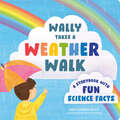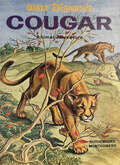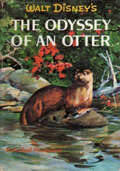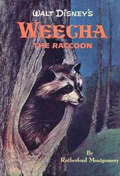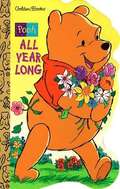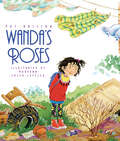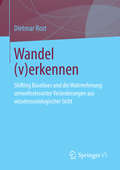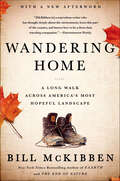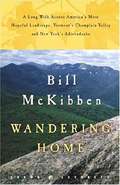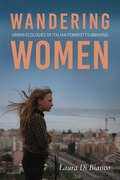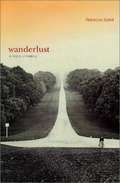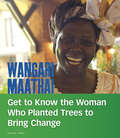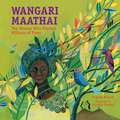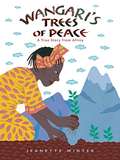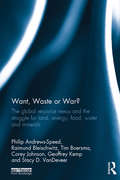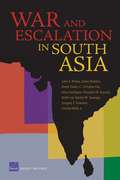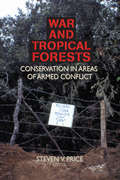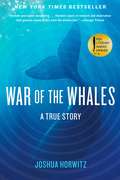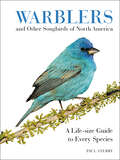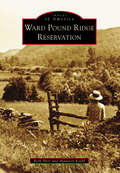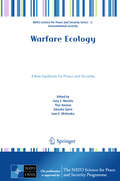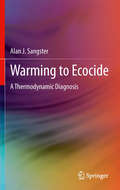- Table View
- List View
Wally Takes a Weather Walk: A Storybook with Fun Science Facts
by Bree Sunshine SmithEngage with the wonderful world of sunshine, rainbows, thunder, and snow as you learn fun facts with Wally! A first weather book for toddlers.Wally Takes a Weather Walk teaches toddlers the science behind what they see outside. What is wind? Why are there two rainbows? What makes snowflakes unique? Follow inquisitive Wally as he walks through summer, fall, winter, and spring, picking up facts about the seasons and weather conditions as he interacts with the natural world. Each page is a chance to spark curiosity around the magic waiting just beyond your front door. • A RAINBOW ASSORTMENT OF STEM FACTS: What does a toddler love more than asking &“Why?&” Here, weather questions are answered with scientific facts about each season. • A LIGHTNING-SMART AUTHOR: The only weather book for toddlers written by an Emmy Award–winning broadcast meteorologist, Bree Sunshine Smith (real name), accredited by the National Weather Association and the American Meteorological Society. • SUN, SNOW, AND ALL FIVE SENSES: A whimsical story helps toddlers stay engaged as they use all five senses to leap into a pile of leaves, taste snowflakes on their tongue, and spot a double rainbow!
Walt Disney's Cougar: A Fact-Fiction Nature Story (Walt Disney's Animal Adventures)
by Rutherford MontgomeryThe twin cougar cubs, Tawny and Chimbica, blinked in the spring sunshine at the entrance of the den they shared with their mother. They could not know that in the mountain wilderness that lay before them they would one day play a desperate game of life and death with a man whose rifle and trained team of hunting dogs had brought down many a marauding cougar . . . including their own father. Charlie Winters, the State Hunter, charged with protecting the lives and property of ranchers and sheepherders did not foresee that he would soon be matching wits with two snarling cougars among the jagged ridges of the high country. At the camp of a lonely sheepherder, the paths of hunter and hunted cross at last. The ensuing chase moves with breathtaking speed to a climax as sudden as a rifle’s crack, followed by the promise of new life and new adventure. The young reader will thrill to this fast-moving tale of life in the high wilderness, where nature’s never-ending struggle draws heightened excitement from the grandeur of its setting.
Walt Disney's The Odyssey of an Otter: A Fact-Fiction Nature Story
by Rutherford MontgomeryA Fact-Fiction nature story for children and young adults. Authorized edition based on a Walt Disney film presentation. This wonderful children's classic is about an otter who is captured by trappers, escapes, and has an eventful journey home to his family. Full of true-to-life details about otters.
Walt Disney's Weecha the Raccoon: A Fact-Fiction Nature Story (Walt Disney's Animal Adventures)
by Rutherford MontgomeryDuring a storm in a forest, a mother raccoon loses two of her three babies, and only Weecha is left. Soon, however, Weecha finds a new companion—Nubbin, an abandoned puppy. The mother raccoon accepts the puppy as though he were one of her own offspring. Together Weecha and Nubbin begin to learn the ways of wild creatures—hunting, fighting, outwitting their enemies—with the mother raccoon always nearby to rescue them from serious danger. But then Weecha and Nubbin are captured by a trapper, and for the first time the two young animals are on their own—swept up into exciting adventures in which they need all the courage and cunning they have learned. This warm, action-filled story is certain to hold the reader’s fascinated attention from the first to the very last page.
Walt Disney's Winnie-the-Pooh All Year Long
by A. A. MilnePooh and his friends find fun activities to do do all year long. Other books about Pooh and his friends are available from Bookshare.
Wanda's Roses
by Pat BrissonThis book about a child's simple faith is one that children will long remember--and adults will love to share.When Wanda discovers a thornbush growing in the empty lot at the corner of Fillmore and Hudson, she's quite sure it's a rosebush all ready to bloom. So she clears away the trash, checks on it every day, and brings water from the butcher shop across the street. But no roses appear. Wanda's neighbors and friends are all doubtful, but when she invites them to a tea party in her "rose garden" one day in June, they're in for a big surprise.
Wandel (v)erkennen
by Dietmar RostAngemessene Antworten auf die Problematik von Klimawandel und Artenschwund verlangen eine gesellschaftliche Wahrnehmung von langfristigen Veränderungen in Natur und Gesellschaft. Das Buch fragt nach den Formen, Grenzen und Konsequenzen der individuellen und kollektiven Wahrnehmung von Wandel und eröffnet ein wissenssoziologisch fundiertes Verständnis der (Nicht-)Wahrnehmung vergangener wie auch zukünftiger Veränderungsprozesse. Dies erfolgt zunächst in einer theoretischen Perspektive durch die Zusammenführung von relevanten Gesichtspunkten aus der Erinnerungs-, Generationen- und Zeitforschung. Das Konzept der ,,Shifting Baselines" liefert hierfür einen Ausgangspunkt. Daran anschließend blickt das Buch anhand von Aufschlüssen aus qualitativen Interviews auf die Wahrnehmung von Wandlungsprozessen unterschiedlicher Dynamik - von langsamem, rapidem und krassem (d. h. katastrophischem) Wandel -, um schließlich die Frage der Varianz und historischen Veränderung der Wahrnehmung von Wandel zu diskutieren.
Wandering Home: A Long Walk Across America's Most Hopeful Landscape
by Bill McKibben“A marvelous writer who has thought deeply about the environment, loves this part of the country, and knows how to be a first-class traveling companion.” —Entertainment WeeklyIn Wandering Home, one of his most personal books, New York Times–bestselling authorBill McKibben invites readers to join him on a hike from his current home in Vermont to his former home in the Adirondacks. Here he reveals that the motivation for his impassioned environmental activism is not high-minded or abstract, but as tangible as the lakes and forests he explored in his twenties, the same woods where he lives with his family today.Over the course of his journey McKibben meets with old friends and kindred spirits, including activists, writers, organic farmers, a vintner, a beekeeper, and environmental studies students, all in touch with nature and committed to its preservation. For McKibben, there is no better place than these woods to work out a balance between the wild and the cultivated, the individual and the global community, and to discover the answers to the challenges facing our planet today.“A short, lovely chronicle of a long hike, during which McKibben meditatively reflects on the relationship between nature and humanity. Nature writing at its best.” —Kirkus Reviews (starred review)“An enamoring and discerning look at one man’s compiled thoughts and researched knowledge on the Adirondacks as he strolls through its dense forests.” —All Points North“[McKibben] writes with his usual wry, approachable power about the Adirondacks, his chosen home . . . The book could single-handedly spur a rush of tourism to the Adirondack area—it’s that good.” —Publishers Weekly (starred review)
Wandering Home: A Long Walk Across America's Most Hopeful Landscape: Vermont's Champlain Valley and New York's Adirondacks
by Bill Mckibben<P>The acclaimed author of The End of Nature takes a three-week walk from his current home in Vermont to his former home in the Adirondacks and reflects on the deep hope he finds in the two landscapes. <P>Bill McKibben begins his journey atop Vermont's Mt. Abraham, with a stunning view to the west that introduces us to the broad Champlain Valley of Vermont, the expanse of Lake Champlain, and behind it the towering wall of the Adirondacks. <P>"In my experience," McKibben tells us, "the world contains no finer blend of soil and rock and water and forest than that found in this scene laid out before me--a few just as fine, perhaps, but none finer. And no place where the essential human skills--cooperation, husbandry, restraint--offer more possibility for competent and graceful inhabitation, for working out the answers that the planet is posing in this age of ecological pinch and social fray." <P>The region he traverses offers a fine contrast between diverse forms of human habitation and pure wilderness. <P>On the Vermont side, he visits with old friends who are trying to sustain traditional ways of living on the land and to invent new ones, from wineries to biodiesel. After crossing the lake in a rowboat, he backpacks south for ten days through the vast Adirondack woods. <P>As he walks, he contemplates the questions that he first began to raise in his groundbreaking meditation on climate change, The End of Nature: What constitutes the natural? How much human intervention can a place stand before it loses its essence? What does it mean for a place to be truly wild? <P>Wandering Home is a wise and hopeful book that enables us to better understand these questions and our place in the natural world. It also represents some of the best nature writing McKibben has ever done.
Wandering Women: Urban Ecologies of Italian Feminist Filmmaking (New Directions in National Cinemas)
by Laura Di BiancoWandering Women: Urban Ecologies of Italian Feminist Filmmaking explores the work of contemporary Italian women directors from feminist and ecological perspectives. Mostly relegated to the margins of the cultural scene, and concerned with women's marginality, the compelling films Wandering Women sheds light on tell stories of displacement and liminality that unfold through the act of walking in the city. The unusual emptiness of the cities that the nomadic female protagonists traverse highlights the absence of, and their wish for, life-sustaining communities. Laura Di Bianco contends that women's urban filmmaking—while articulating a claim for belonging and asserting cinematic and social agency—brings into view landscapes of the Anthropocene, where urban decay and the erasure of nature intersect with human alienation. Though a minor cinema, it is also a powerful movement of resistance against the dominant male narratives about the world we inhabit.Based on interviews with directors, Wandering Women deepens the understanding of contemporary Italian cinema while enriching the field of feminist ecocritical literature.
Wanderlust: A History of Walking
by Rebecca SolnitWhat does it mean to be out walking in the world, whether in a landscape or a metropolis, on a pilgrimage or a protest march? In "Wanderlust: A History of Walking", Rebecca Solnit draws together many histories -- of anatomical evolution and city design, of treadmills and labyrinths, of walking clubs and sexual mores -- to create a portrait of the range of possibilities for this most basic act. Arguing that walking as history means walking for pleasure and for political, aesthetic, and social meaning, Solnit homes in on the walkers whose everyday and extreme acts have shaped our culture, from the peripatetic philosophers of ancient Greece to the poets of the Romantic Age, from the perambulations of the Surrealists to the ascents of mountaineers. The first general "History of Walking", Solnit's book finds a profound relationship between walking and thinking, walking and culture, and argues for the necessity of preserving the time and space in which to walk in an ever-more automobile-dependent and accelerated world.
Wangari Maathai: Get to Know the Woman Who Planted Trees to Bring Change (People You Should Know)
by Lisa A. CraytonWangari Maathai was a fierce protector of the environment and a couragous advocate for women's rights, especially in her native country of Kenya. Her journey from a girl of rural Africa to college professor, founder of the Green Belt Movement, and Nobel Peace Prize Laureate shows readers how little things can bring about big change.
Wangari Maathai: The Woman Who Planted Millions of Trees
by Franck Prévot&“Trees are living symbols of peace and hope.&” –Wangari Maathai, Nobel Peace laureateWangari Maathai changed the way the world thinks about nature, ecology, freedom, and democracy, inspiring radical efforts that continue to this day.This simply told story begins with Green Belt Movement founder Wangari Maathai&’s childhood at the foot of Mount Kenya where, as the oldest child in her family, her responsibility was to stay home and help her mother. When the chance to go to school presented itself, she seized it with both hands. She traveled to the US to study, where she saw that even in the land of the free, black people were not welcome.Returning home, Wangari was determined to help her people and her country. She recognized that deforestation and urbanization was at the root of her country&’s troubles. Her courage and confidence carried her through adversity to found a movement for peace, reconciliation, and healing. Aurélia Fronty&’s beautiful illustrations show readers the color and diversity of Wangari&’s Africa—the green trees and the flowering trees full of birds, monkeys, and other animals; the roots that dig deep into the earth; and the people who work and live on the land.
Wangari's Trees of Peace: A True Story from Africa
by Jeanette WinterAs a young girl growing up in Kenya, Wangari was surrounded by trees. But years later when she returns home, she is shocked to see whole forests being cut down, and she knows that soon all the trees will be destroyed. So Wangari decides to do something—and starts by planting nine seedlings in her own backyard. And as they grow, so do her plans. . . . This true story of Wangari Maathai, environmentalist and winner of the Nobel Peace Prize, is a shining example of how one woman’s passion, vision, and determination inspired great change. Includes an author’s note.
Wann bekommen die Küstenbewohner denn nun nasse Füße?
by Rüdiger SchachtAlltagsleben und Wissenschaft - ein ,,wunderbares" Beispiel für Parallelgesellschaften und in vielen Fällen ein Kommunikationsdesaster erster Güte: Längst versteht der Mensch auf der Straße den Wissenschaftler nicht mehr. Gerade am Beispiel der zum Teil hochemotional besetzten Debatte um die Klimaforschung zeigt sich, wie weit die beiden Welten auseinanderklaffen. Die vielfach schlechte Kommunikation der Methoden und Ergebnisse der Klimaforschung und die mediale Überspitzung der Vergangenheit rächen sich und kaum ein Mensch außerhalb des Wissenschaftsbetriebs überblickt noch die Methoden und Facetten der Klimaforschung. So versucht das vorliegende Buch die Debatte um die Klimaforschung wieder auf die Sach- und Faktenebene zu ziehen und einmal nachzuschauen, auf welchen Methoden die Ergebnisse der modernen Klimaforschung eigentlich fußen. Woher stammen die Daten, wie kann man die Ergebnisse zusammenführen und wie sehen die Schlussfolgerungen aus? Führende Klimaforscher schildern ihren Ansatz, der von der Datenerhebung bis zu den Klimamodellen reicht - und darüber hinaus! Mit einem Nachwort von Prof. Dr. Mojib Latif.
Want, Waste or War?: The Global Resource Nexus and the Struggle for Land, Energy, Food, Water and Minerals (Earthscan Studies in Natural Resource Management)
by Geoffrey Kemp Raimund Bleischwitz Philip Andrews-Speed Stacy D. VanDeveer Tim Boersma Corey JohnsonIn addition to environmental change, the structure and trends of global politics and the economy are also changing as more countries join the ranks of the world’s largest economies with their resource-intensive patterns. The nexus approach, conceptualized as attention to resource connections and their governance ramifications, calls attention to the sustainability of contemporary consumer resource use, lifestyles and supply chains. This book sets out an analytical framework for understanding these nexus issues and the related governance challenges and opportunities. It sheds light on the resource nexus in three realms: markets, interstate relations and local human security. These three realms are the organizing principle of three chapters, before the analysis turns to crosscutting case studies including shale gas, migration, lifestyle changes and resource efficiency, nitrogen fertilizer and food systems, water and the Nile Basin, climate change and security and defense spending. The key issues revolve around competition and conflict over finite natural resources. The authors highlight opportunities to improve both the understanding of nexus challenges and their governance. They critically discuss a global governance approach versus polycentric and multilevel approaches and the lack of those dimensions in many theories of international relations.
Wanted: Lost Amphibians (Fountas & Pinnell LLI Purple #Level T)
by Jacqueline AdamsMany of the world's frogs went missing. Some hadn't been seen in more than a hundred years. Were they gone forever? Scientists went a worldwide hunt to find out.
War Against Ourselves: Nature, Power and Justice
by Jacklyn CockA look at nature and how to re-evaluate our relationship with itFor many people "nature" means wilderness and wild animals. It is experienced indirectly through magazines and television programs or through visiting the highly managed environments of national parks. Nature, however, is not external, separate from the world of people we live in nature and interact with it daily.In this book, Jacklyn Cock describes how these intricate and complex interconnections, seen and unseen, are often ignored. Each of the ten chapters examines an aspect of our relationship with nature: ignoring, understanding, enjoying, imitating, privatizing, polluting, abusing, protecting as well as organizing for nature. The concluding chapter deals with the growing inequality between the North and the South.The War Against Ourselves compels us to re-examine our relationship with nature, to change our practices and dissolve present binary divisions such as people vs. animals, economic growth vs environmental protection, "nature" vs "culture." It demonstrates the need for an inclusive politics which brings together peace, social and environmental justice activists who believe that another world is both possible and necessary.
War and Escalation in South Asia
by Nina Hachigian C. Christine Fair Derek Eaton John E. Peters James DickensThis monograph highlights key factors in South Asia imperiling U.S. interests, and suggests how and where the U.S. military might play an expanded, influential role. It suggests seven steps the military might take to better advance and defend U.S. interests in South Asia, the Middle East, and Asia at large. Washington should intensify involvement in South Asia and become more influential with the governments there. Given the area's potential for violence, it should also shape part of the U.S. military to meet potential crises.
War and Tropical Forests: Conservation in Areas of Armed Conflict
by Steven PriceExplore the conservation implications of recent armed conflicts in the tropical forest regions of Asia, Africa, and Latin America! From the lowland rainforests of the Colombian Amazon to the rugged habitat of Rwanda's mountain gorillas, civil, ethnic, and international wars have had severe impacts on tropical forests and the communities they sustain. The reemergence of war and the persistence of its impacts have led many conservationists to reassess their efforts and adapt their strategies to a new set of responsibilities and urgent challenges. War and Tropical Forests: Conservation in Areas of Armed Conflict explores these challenges and the lessons learned by conservationists working in conflict zones around the world. It combines case studies and comparative analyses by leading experts in ecological research, environmental policy, and conservation field programs to provide insight into the environmental dimensions of recent social, political, and humanitarian crises. War and Tropical Forests reviews lessons learned from conflict zones around the world and explores: the potential of conservation to reduce the frequency, duration, and impact of war preparation of conservation programs and local communities for crises strategies for maintaining conservation capacity during times of conflict the underlying political and economic factors that fuel war legal mechanisms for addressing wartime damage to tropical forests building partnerships amidst civil strife and political upheaval This essential book also examines: the Indonesian military's role in illegal logging and deforestation violent conflict and gorilla poaching in the Democratic Republic of Congo armed movements and forest conservation in Nicaragua's largest protected area and much more! War and Tropical Forests also addresses the role of militaries in the inequitable control and illicit use of forest resources, the environmental impact of refugees, the growing social and environmental costs of efforts to eradicate drug crops, and the impact of conflict on protected area management in the habitat of Africa's endangered great apes. War and Tropical Forests is an essential resource for conservation practitioners and policymakers, as well as anyone involved with human rights, conflict resolution, rural development, international law, or foreign relations.
War of the Whales
by Joshua HorwitzTwo men face off against an all-powerful navy--and the fate of the ocean's most majestic creatures hangs in the balance."A gripping, brilliantly told tale of the secret and deadly struggle between American national security and the kings of the oceans."--Bob WoodwardWar of the Whales is the gripping tale of a crusading attorney who stumbles on one of the US Navy's best-kept secrets: a submarine detection system that floods entire ocean basins with high-intensity sound--and drives whales onto beaches. As Joel Reynolds launches a legal fight to expose and challenge the Navy program, marine biologist Ken Balcomb witnesses a mysterious mass stranding of whales near his research station in the Bahamas. Investigating this calamity, Balcomb is forced to choose between his conscience and an oath of secrecy he swore to the Navy in his youth. When Balcomb and Reynolds team up to expose the truth behind an epidemic of mass strandings, the stage is set for an epic battle that pits admirals against activists, rogue submarines against weaponized dolphins, and national security against the need to safeguard the ocean environment. Waged in secret military labs and the nation's highest court, War of the Whales is a real-life thriller that combines the best of legal drama, natural history, and military intrigue.
Warblers and Other Songbirds of North America: A Life-size Guide to Every Species
by Paul SterryA stunning full-color photographic field guide to 285 species in life-sized detail.Birds such as the Acadian Flycatcher, Golden-crowned Kinglet, Indigo Bunting, Northern Mockingbird, Pyrrhuloxia, Rock Wren, Song Sparrow, Tree Swallow, and the Yellow Throated Warbler are known for the elaborate songs produced by their highly developed vocal organs. Warblers and Other Songbirds of North America is a breathtaking collection of 285 species of these beautiful, melodious creatures, the largest number of species in a single field guide about North American songbirds.Arranged by region and taxonomic order, every songbird is depicted life-sized; each photograph is accompanied by a short description with essential information on identification and the particular species, habits, and behavior. Every species entry also includes a map showing where the species can be found, as well as a fact grid listing key details such as common and scientific name, length, food, habitat, status, and voice. You’ll also find fun facts about these members of the order Passeriformes—like how their toes allow them to perch with ease while they perform. Every photograph is gloriously detailed and chosen to show each species’ unique identification features and typical postures. Warblers and Other Songbirds of North America is ideal for the experienced birdwatcher, the aspiring naturalist, and every bird lover.
Ward Pound Ridge Reservation (Images of America)
by Maureen Koehl Beth HerrWard Pound Ridge Reservation's expansive landscapes and long-abandoned cellar holes tell a unique story. Its 4,315 acres, set aside by the Westchester County Parks Commission in 1925, hold within its boundaries a legacy left by the Native Americans and 18th- and 19th-century families who farmed the rolling fields and rocky hillsides. Marks of the 20th century include the remains of the Civilian Conservation Corps (CCC) encampment and the stone walls, trailside shelters, and roads built by these young men. Thousands of trees planted by the CCC stand tall, shading the reservation's hiking and riding trails. Sitting amidst the park's streams, cliffs, and hills is the Trailside Nature Museum, which was enhanced by the efforts of local garden club women. Indian rock shelters and a cave used by the Leather Man lend an air of mystery to the beauty and wonders of the park's protected flora and fauna. Almost a century after its quiet beginnings, the reservation still invites visitors to enjoy and learn about the wonders of nature.
Warfare Ecology
by Thor Hanson Gary E. Machlis Jean E. Mckendry Zdravko ŠpirićThe purpose of this book is specific and ambitious: to outline the distinctive elements, scope, and usefulness of a new and emerging field of applied ecology named warfare ecology. Based on a NATO Advanced Research Workshop held on the island of Vieques, Puerto Rico, the book provides both a theoretical overview of this new field and case studies that range from mercury contamination during World War I in Slovenia to the ecosystem impacts of the Palestinian occupation, and from the bombing of coral reefs of Vieques to biodiversity loss due to violent conflicts in Africa. Warfare Ecology also includes reprints of several classical papers that set the stage for the new synthesis described by the authors. Written for environmental scientists, military and humanitarian relief professionals, conservation managers, and graduate students in a wide range of fields, Warfare Ecology is a major step forward in understanding the relationship between war and ecological systems.
Warming to Ecocide
by Alan J. SangsterDespite scientific evidence that business-as-usual is unsustainable, there is a huge and widespread inertia to 'greening' the planet. Warming to Ecocide considers climate change from a thermodynamic perspective and asks whether market-driven organisations have carried us to the point of no return through the flawed economics of endless growth. Warming to Ecocide begins by exploring the thermodynamic origins of climate change. It demonstrates that equilibrium thermodynamics can provide full explanations for the basic processes of life such as photosynthesis and metabolism, and that non-equilibrium thermodynamics is close to providing an explanation for how life started. Armed with a solid appreciation of the power of thermodynamics, the second half of Warming to Ecocide discusses whether multinational corporations have convinced the public that climate change is insignificant and thereby neutered any all attempts by governments to espouse environmentally-friendly policies. It then goes on to offer strategies whereby mankind may avoid propelling the global average temperature above the pre-industrial level by more than 2°C, which scientists view as a threshold presaging catastrophic run-away processes.
